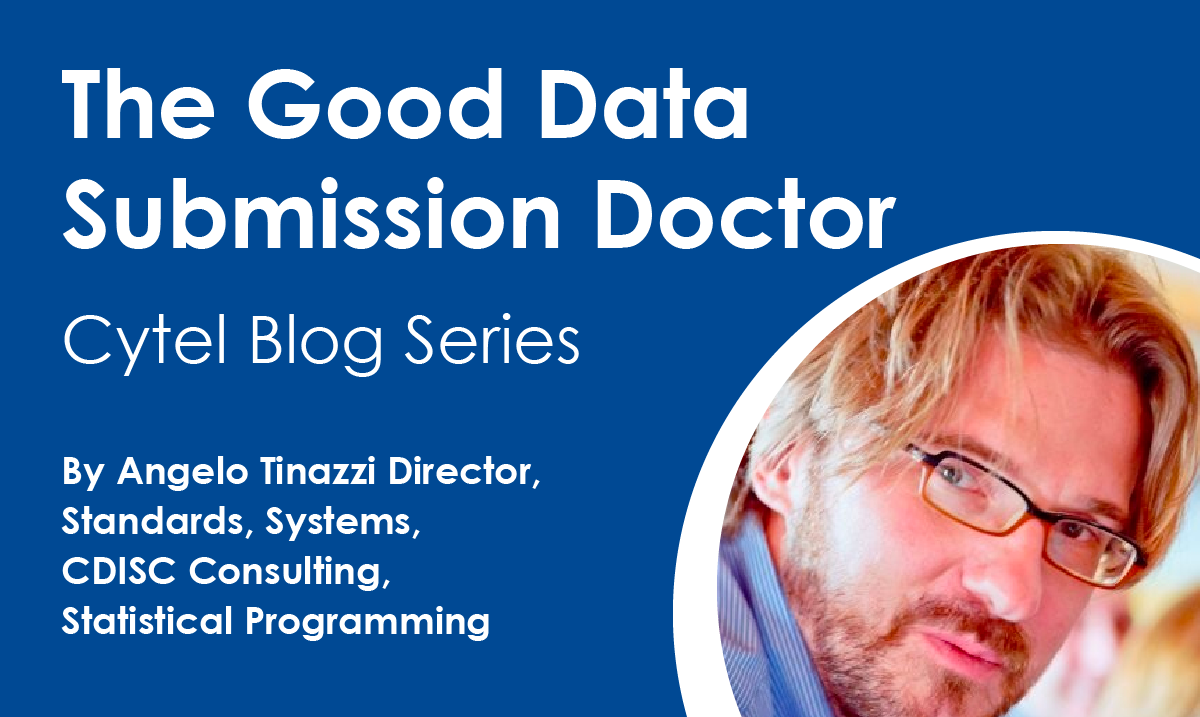The Good Data Submission Doctor - New ADaM Implementation Guidance


October 3, 2019 was an important day for the ADaM team as it marked the release of the ADaM Implementation Guidance (Ig) 1.2. Download the new guidance from the CDISC website here.
In 2018, several previews of the new Ig were made at CDISC Interchanges all around the world and at PhUSE conferences, it was only a few weeks ago that the final version was released. At first glance, the new Ig does not seem to contain a lot of new concepts and ideas. However, a critical and in-depth review clearly shows the efforts of the entire team to release this new Ig. Creating a new standard or releasing a new version of an existing standard is not an easy job. You need to ensure that you do not introduce anything that contradicts any of the existing CDISC standards. This includes, not only new variables but also any changes in existing sentences or adding entirely new sections that may cause misinterpretations or discrepancies. Moreover, every standard team member comes with their own background, company needs, and specific indication needs. It is not always easy to propose a solution that can satisfy everyone on the team.
What is the new guidance bringing to the CDISC (ADaM) community?
You can find a detailed revision history in the ADaM Ig. Here are some of the key changes or enhancements:- New variables added to ADSL, for example, a set of variables to store randomization stratification factors
- Clarification of the fact that only one ADSL can exist, but other subject-based ADaM datasets can be created with either class ADaM OTHER or BDS
- Clarification on the option to create a pre-ADSL ADaM dataset to improve traceability (see page 21 of the guidance)
- Clarification that not all ADSL variables must be copied to all other ADaM datasets. Copy only the variables that are relevant for the analysis supported by each ADaM datasets, for example, copying the efficacy population flag in ADAE may not be relevant!
- PARAMTYP in BDS was removed, but if sponsors want to keep using the variable, this will not represent a major deviation
- New variables added in BDS structure to better support the analysis of bi-directional lab toxicity analysis (see an example of implementation on page 100 of the guidance)
- New variables added in BDS structure to support other types of change from baseline information, for example, percentage change in categories
- Additional recommendations added (for example, SAS code) on how to handle multiple imputations documentation in ADaM define.xml or Analysis Data Reviewer Guide
Many other sections of the guidance were also changed, and wording was improved to add clarity to the guidance and the recommendations. The bad news for the ADaM “users” is that the new PARQUAL variable has not been approved yet by the ADaM leadership, affirming that the concept of the new variable requires further development.
The following changes will take time:
- Health authorities (e.g. FDA) starting to officially accept submissions with this new version
- Standard Validation tools such as Pinnacle21 will implement specific checks for ADaM Ig 1.2 (official conformance checks from CDISC are not yet available)
However, you can use the new variables added in this version (as they DO NOT deviate from the standard ADaM model) and apply any new recommendation/clarification “statement” added in this guidance.
Stay tuned as the ADaM team has a full schedule for 2020 with many planned deliverables. The most important and awaited guidance is the “ADaM Data Structures for Integration”. This will introduce new ADaM structures to support specific needs when subjects from various studies are integrated into a single set of ADaM datasets to support Integrated Summary of Safety (ISS) or Integrated Summary of Efficacy (ISE).
At the next PhUSE-EU Connect in Amsterdam, I recommend attending the presentation by my colleagues Magalie Gallet and Laura Phelan (check schedule below). Magalie and Laura will share a recent submission experience, the many challenges they had to face to integrate data into ADaM datasets and how the “ADaM Data Structures for Integration” guidance could have helped if it was available at the time of the submission.
Recommended readings:
- ADaM Structures for Integration: A Preview - Wayne Zhong; Kimberly Minkalis; Deborah Bauer – PharmaSUG 2018 (Paper DS03)
- ADaM Ig 1.2 a news from the ADaM team – Paola Vaghi – VI CDISC Italian User Network, 2019
Visit Cytel at booth 4 at PhUSE-EU Connect in Amsterdam between November 10 - 13.
Arrange a meeting with our representatives at PhUSE-EU.
Cytel presentations at PhUSE EU:
Monday, November 11, 2019
2 pm to 2:15 pm - “SAS Outputs in Excel Workbook Using ODS Excel” by Meghana Mahajani
4:30 pm to 5 pm - “Choosing the Right Path to Follow When Integrating ADaM” by Magalie Gallet and Laura Phelan
Tuesday, November 12, 2019
11:30 am to 12:00 noon - “No place like Home: Managing Remote Programmers Remotely” by Caroline Terrill
2:30 pm to 3 pm - “Detriment Index-based Safety Ranking of Opioid Drugs” by Samadhan Ghubade


